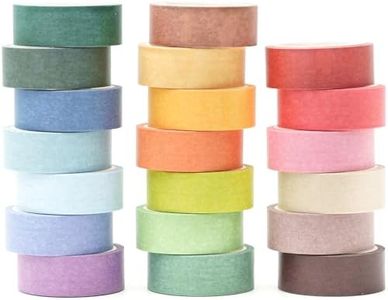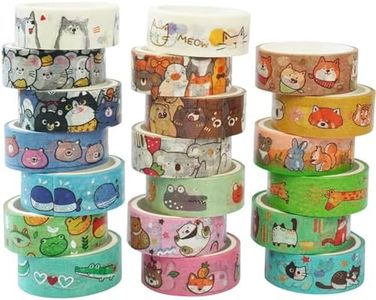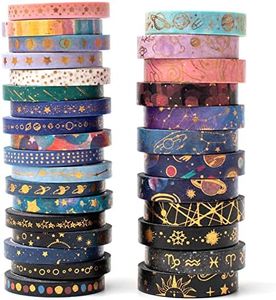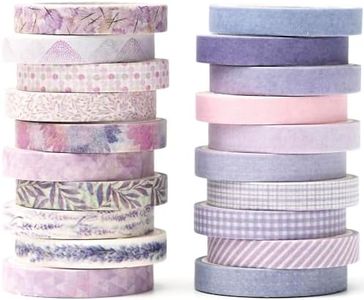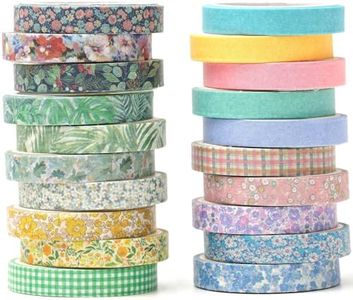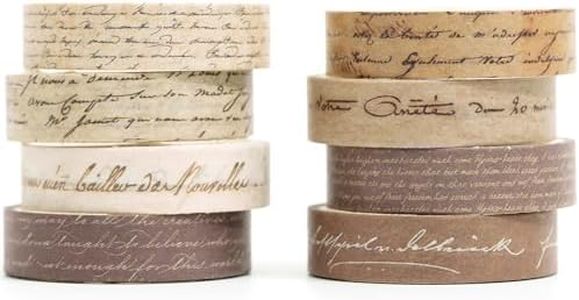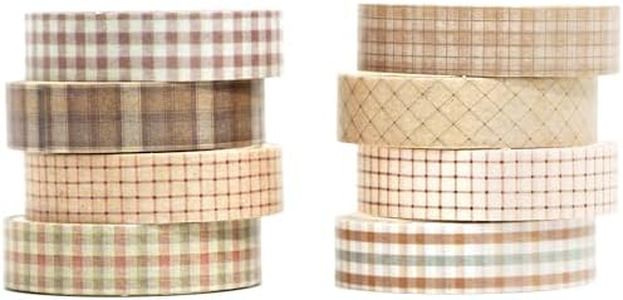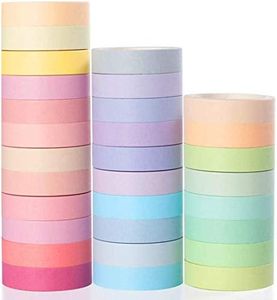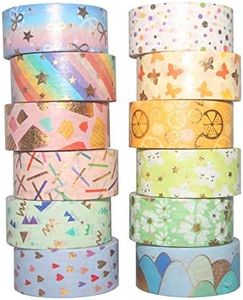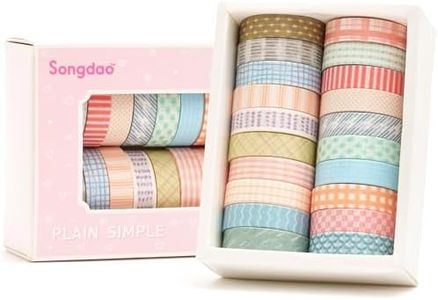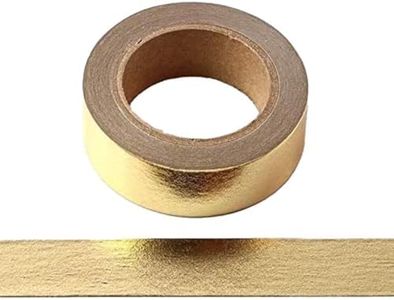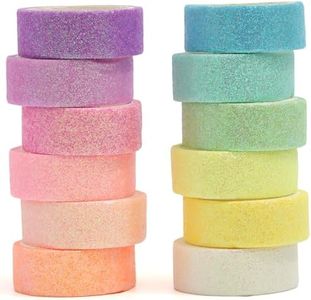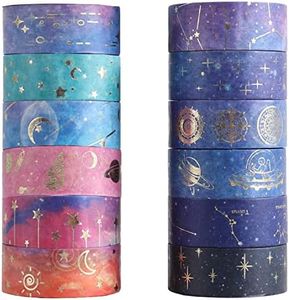We Use CookiesWe use cookies to enhance the security, performance,
functionality and for analytical and promotional activities. By continuing to browse this site you
are agreeing to our privacy policy
10 Best Washi Tapes
From leading brands and best sellers available on the web.Buying Guide for the Best Washi Tapes
Washi tapes are decorative adhesive tapes, most commonly made from traditional Japanese paper, and are beloved by crafters and stationery fans for their beautiful designs and versatility. When picking washi tape, it’s important to consider where and how you plan to use it—such as for journaling, scrapbooking, gift wrapping, home décor, or even organizing. The best fit will depend on your preferences for design, durability, and practical usability in your chosen projects.WidthThe width of washi tape is how wide the tape is, measured in millimeters or inches. This matters because it determines how much space the tape covers and how bold it will look on your project. Narrow tapes (around 5-7mm) are perfect for fine borders, underlining, or small accents; medium widths (about 10-15mm) offer a balance between detail and visibility, ideal for most general purposes; wider tapes (20mm and above) can make a statement or cover larger areas, good for wrapping or creating decorative borders. Choose the width based on whether you want a subtle accent, detailed lines, or a strong visual presence.
LengthLength refers to how much tape you get in a roll, usually measured in meters or feet. It’s important if you plan on using a certain pattern frequently or for bigger projects. Short rolls (2-5 meters) are fine if you like variety and want to try lots of designs without much waste, while longer rolls (10 meters or more) are better if you fall in love with one pattern and plan on using it for many pages or bigger tasks. Consider how much of each tape you’ll realistically use to avoid running out too soon or accumulating unused leftovers.
Adhesive StrengthAdhesive strength tells you how sticky the washi tape is. Standard washi tape is lightly adhesive, so it’s easy to reposition and remove without damaging surfaces—good for paper crafts like journals and notebooks. Some tapes are extra sticky and meant for heavier-duty sticking, useful for things like wall art or organizing items that need to stay in place. If you mainly do paper crafts or temporary decorations, look for standard stickiness. If secure adhesion is crucial or you plan to use the tape on uneven surfaces, seek tapes known for stronger adhesive.
Design/PatternThe design or pattern on washi tape is the fun part—it can feature anything from florals, geometrics, solid colors, metallic finishes, to themed motifs like animals or holidays. The right design enhances your project by adding visual interest. Some people like to mix many styles, while others prefer a coordinated look. Think about the mood or theme you want: simple patterns work well for organized layouts, while bold or playful designs can make your creations stand out. Reflect on how the tape will match with your existing supplies and the general tone of your projects.
Material QualityMaterial quality refers to how well the tape is made—the smoothness of the paper, how easily it tears by hand, and whether it peels off cleanly. Higher quality washi tape is thin but strong, tears cleanly, sticks reliably without leaving residue, and has vibrant, consistent printing. Cheaper tapes may lose stickiness quickly or tear unevenly. If you want a pleasant crafting experience and lasting results, pay attention to how smooth and easy the tape is to handle, especially for regular or detailed work.
TransparencyWashi tape is often a little transparent. Depending on your use, this can matter—semi-transparent tapes will show the background surface or colors underneath, while more opaque tapes will mostly cover what’s beneath. For layering effects or subtle highlights, a bit of transparency works well, but if you need to hide underlying text or patterns, look for more opaque options. Consider whether you want the tape to blend gently or to clearly stand out against the surface you’ll use it on.
